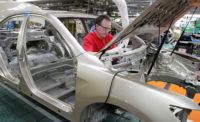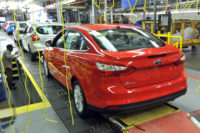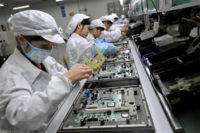Midwest Is Most Robot-Dense Region

NEW YORK—A recent report sponsored by the Century Foundation claims that industrial robots have not yet brought the dire nationwide effects that some people have warned about. “How Robots Are Beginning to Affect Workers and Their Wages” shows that the impact of automation varies across groups of workers, regions and industries.
“There have been clear losers with increased automation—namely, younger, less-educated manufacturing workers in the Midwest and younger, minority workers in these industries in particular,” says co-author William Rodgers, a professor of public policy at Rutgers University and chief economist at the Heldrich Center for Workforce Development. “These industries not only have the highest number of robots in use, but are also experiencing the fastest growth in robot adoption.
“A strong economic recovery over the past decade has saved many jobs and slowed automation in the United States, but workers in the Midwest manufacturing industry are being displaced at the highest rates by robots,” explains Rodgers. “Since 2009, the number of manufacturing robots has more than doubled, from 0.813 per 1,000 workers to 1.974 per 1,000 workers.
Because of the automotive industry, states in the Midwest consistently have the highest robot density—typically at least twice the intensity of all other regions.
According to Rodgers, the top-10 areas with the most robots in operation are Los Angeles-Long Beach-Santa Ana, CA; Chicago-Naperville-Joliet, IL; Houston-Baytown-Sugar Land, TX; Phoenix-Mesa-Scottsdale, AZ; Detroit-Warren-Dearborn, MI; Milwaukee-Waukesha-West Allis, WI; Philadelphia-Camden-Wilmington, PA-NJ-DE-MD; San Jose-Sunnyvale-Santa Clara, CA; Indianapolis,; and Cleveland-Elyria, OH.
Looking for a reprint of this article?
From high-res PDFs to custom plaques, order your copy today!








